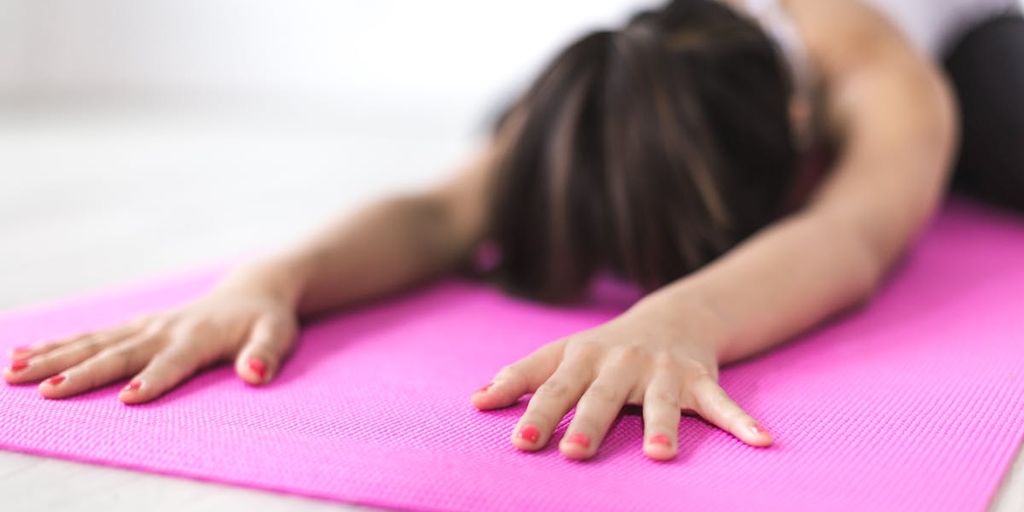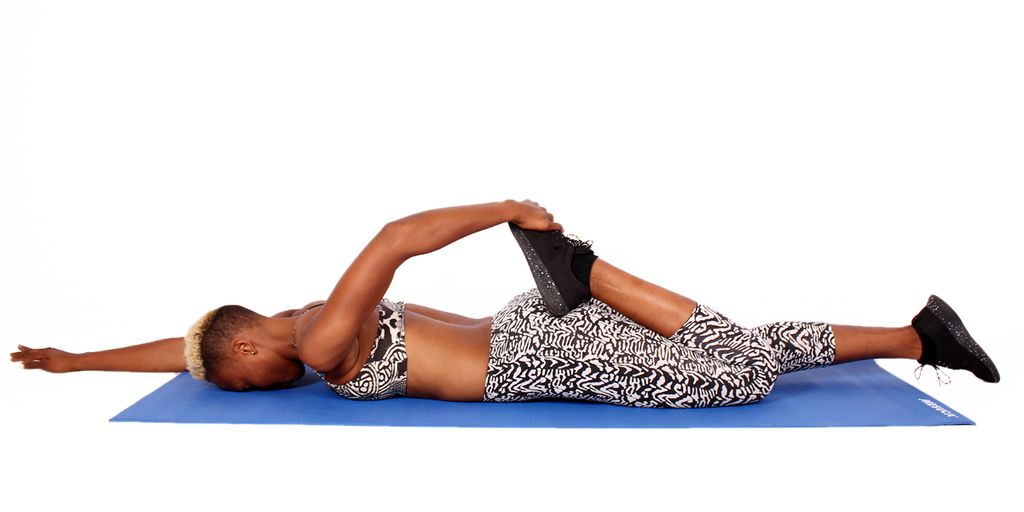
The Ultimate Guide to Choosing the Perfect Rubber Yoga Mat
Choosing the perfect rubber yoga mat can significantly enhance your yoga practice, providing you with the right balance of comfort, grip, and durability. This guide will walk you through the benefits of rubber yoga mats, how to select the appropriate thickness, care tips, comparisons with other materials, top brands, and budgeting advice. By the end of this guide, you'll be well-equipped to make an informed decision that suits your needs and preferences.
Key Takeaways
- Rubber yoga mats are eco-friendly and offer superior grip and comfort.
- Selecting the right thickness is crucial for balancing comfort and performance.
- Proper care and maintenance can extend the lifespan of your rubber yoga mat.
- Rubber mats are generally more durable compared to PVC, TPE, and cork mats.
- Top brands offer a range of options to fit different budgets and preferences.
Benefits of Using a Rubber Yoga Mat
Eco-Friendly and Sustainable
Rubber yoga mats are made from natural materials, making them an eco-friendly choice for environmentally conscious yogis. These mats are biodegradable and often sourced from sustainable rubber plantations, reducing your carbon footprint.
Durability and Longevity
One of the standout features of rubber yoga mats is their durability. Unlike mats made from synthetic materials, rubber mats can withstand intense use over long periods without showing significant wear and tear. This makes them a cost-effective investment for serious practitioners.
Superior Grip and Comfort
Rubber yoga mats offer superior grip, ensuring that you maintain stability during your practice. The natural texture of rubber provides excellent traction, which is especially beneficial for poses that require a firm hold. Additionally, these mats offer a comfortable cushioning effect, enhancing your overall yoga experience.
Investing in a rubber yoga mat not only benefits your practice but also supports a more sustainable and eco-friendly lifestyle.
How to Choose the Right Thickness for Your Rubber Yoga Mat
Understanding Thickness Options
Impact on Comfort and Performance
Thicker mats provide more cushioning, which is ideal for practices that involve a lot of floor work or for those with sensitive joints. However, they can be less stable for standing poses. Thinner mats offer better stability but less cushioning.
Recommendations for Different Yoga Styles
- Hatha Yoga: A standard mat (4-5mm) is usually sufficient.
- Vinyasa or Ashtanga Yoga: A thinner mat (3-4mm) can provide better stability.
- Restorative or Yin Yoga: A thicker mat (5-6mm) offers more comfort.
Choosing the right thickness can significantly enhance your yoga practice by providing the right balance of comfort and stability.
Caring for Your Rubber Yoga Mat
Cleaning and Maintenance Tips
Regular cleaning is essential to maintain the hygiene and longevity of your rubber yoga mat. Use a mild soap and water solution to wipe down the mat after each use. Avoid harsh chemicals as they can degrade the rubber material. Choosing the right cleaning products can make a significant difference in maintaining the mat's quality.
Storage Solutions
Proper storage is crucial to extend the lifespan of your rubber yoga mat. Always roll your mat with the top side facing out to prevent curling. Store it in a cool, dry place away from direct sunlight to avoid any material degradation. Using a mat bag can also protect it from dust and dirt.
Extending the Lifespan of Your Mat
To get the most out of your rubber yoga mat, rotate its use to ensure even wear and tear. Avoid wearing shoes on the mat to prevent punctures and tears. Additionally, regularly inspect your mat for any signs of damage and address them promptly to maintain its performance.
Consistent care and proper storage can significantly extend the life of your rubber yoga mat, ensuring you get the best value for your investment.
Comparing Rubber Yoga Mats to Other Materials
Rubber vs. PVC Mats
Rubber yoga mats are known for their eco-friendliness and natural composition, whereas PVC mats are often criticized for their environmental impact. Rubber mats provide superior grip, making them ideal for intense yoga sessions. On the other hand, PVC mats are generally more affordable but may not offer the same level of comfort and durability.
Rubber vs. TPE Mats
Thermoplastic Elastomer (TPE) mats are a popular alternative to rubber mats. TPE mats are lightweight and often more affordable. However, rubber mats excel in durability and grip, making them a better choice for long-term use. If sustainability is a priority, rubber mats are the clear winner due to their natural materials.
Rubber vs. Cork Mats
Cork mats offer a unique texture and are also eco-friendly. They provide excellent grip when wet, making them suitable for hot yoga. However, rubber mats offer a more consistent grip and are generally more durable. Cork mats can be heavier and less flexible, which might be a consideration for those who travel frequently with their mat.
When choosing between rubber and other materials, consider your priorities: eco-friendliness, grip, durability, and cost. Each material has its own set of advantages and disadvantages, so weigh them carefully to find the perfect mat for your practice.
Top Brands for Rubber Yoga Mats
Brand A Overview
Brand A is renowned for its high-quality rubber yoga mats that offer exceptional durability and grip. Their mats are often praised for being eco-friendly and sustainable, making them a top choice for environmentally conscious yogis. Brand A's mats come in various thickness options to suit different preferences and yoga styles.
Brand B Overview
Brand B stands out for its innovative designs and superior comfort. Their rubber yoga mats are designed to provide excellent support and cushioning, which is ideal for both beginners and advanced practitioners. Brand B also offers a range of colors and patterns, allowing yogis to express their personal style while practicing.
Brand C Overview
Brand C is a favorite among professional yogis due to its premium quality and performance. Their mats are known for their exceptional grip, even during the sweatiest sessions. Brand C also focuses on sustainability, using natural rubber and eco-friendly manufacturing processes. Their mats are a bit pricier, but the investment is worth it for serious practitioners.
When choosing a rubber yoga mat, consider the brand's reputation for quality and sustainability. Investing in a high-quality mat can significantly enhance your yoga practice and ensure longevity.
As you'll see below, Prolana's mats, Brentwood Home's mats, and Green Earth's yoga mats carry with them a ton of certifications, including from Forestry ...
Budgeting for Your Rubber Yoga Mat
Price Ranges and What to Expect
When budgeting for a rubber yoga mat, it's essential to understand the different price ranges and what they offer. High-end mats can cost upwards of $100, offering superior durability and grip. Mid-range options, typically between $50-$100, provide a balance of quality and affordability. Budget-friendly mats, priced under $50, may lack some advanced features but are still functional for beginners.
| Price Range | Features |
|---|---|
| Under $50 | Basic functionality, suitable for beginners |
| $50-$100 | Good balance of quality and affordability |
| Over $100 | Superior durability, grip, and additional features |
Finding Deals and Discounts
To get the best value, look for deals and discounts. Many brands offer seasonal sales, and you can often find discounts during holidays. Additionally, signing up for newsletters from yoga mat brands can provide exclusive offers. Don't forget to check online marketplaces for competitive pricing.
Balancing Cost and Quality
Balancing cost and quality is crucial when choosing a rubber yoga mat. While it might be tempting to go for the cheapest option, investing a bit more can provide better performance and longevity. Consider your yoga practice frequency and style to determine the right balance for you.
Investing in a quality rubber yoga mat can enhance your practice and provide long-term value, making it worth the initial cost.
Budgeting for your rubber yoga mat doesn't have to be a daunting task. At Yune Yoga, we offer a variety of high-quality natural rubber mats that cater to every budget. Whether you're a beginner or a seasoned yogi, you'll find the perfect mat to support your practice. Visit our website to explore our collection and take advantage of free shipping on all orders!
Conclusion
Choosing the perfect rubber yoga mat involves considering various factors such as thickness, texture, durability, and eco-friendliness. By understanding your personal preferences and yoga practice needs, you can make an informed decision that enhances your overall experience. Remember, the right mat can significantly impact your comfort and performance, making your yoga journey more enjoyable and fulfilling. Take your time to explore different options, and don't hesitate to invest in a high-quality mat that aligns with your values and requirements.
Frequently Asked Questions
What are the benefits of using a rubber yoga mat?
Rubber yoga mats are eco-friendly, durable, and provide superior grip and comfort during your practice.
How do I choose the right thickness for my rubber yoga mat?
Consider your comfort and performance needs. Thicker mats offer more cushioning, while thinner mats provide better stability.
How should I clean and maintain my rubber yoga mat?
Clean your mat with a gentle soap and water solution, and let it air dry. Avoid exposing it to direct sunlight for extended periods.
What are the differences between rubber and PVC yoga mats?
Rubber mats are more eco-friendly and offer better grip, while PVC mats are often cheaper but less sustainable.
Which brands are recommended for rubber yoga mats?
Top brands include Brand A, Brand B, and Brand C, known for their quality and durability.
How can I find deals and discounts on rubber yoga mats?
Look for sales on brand websites, sign up for newsletters, and check online marketplaces for discounts.


